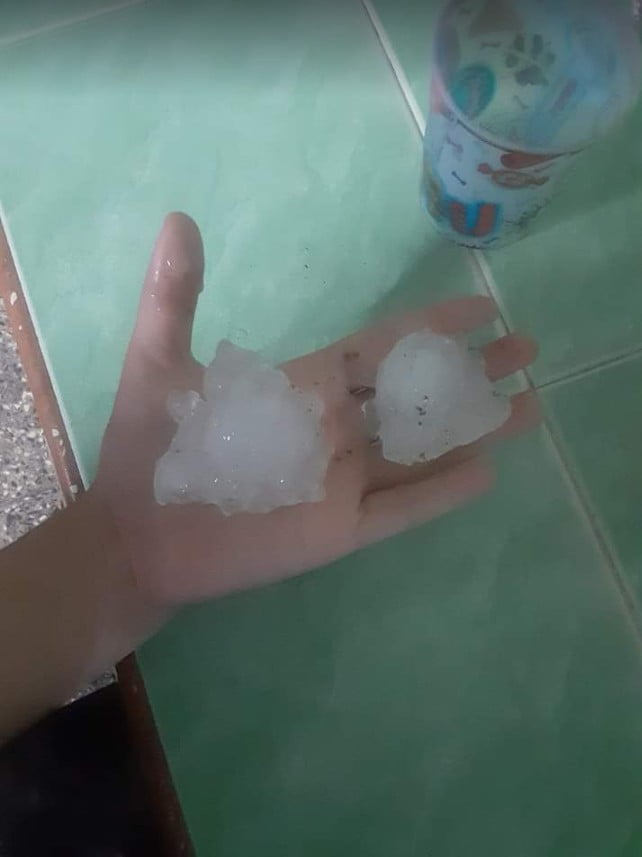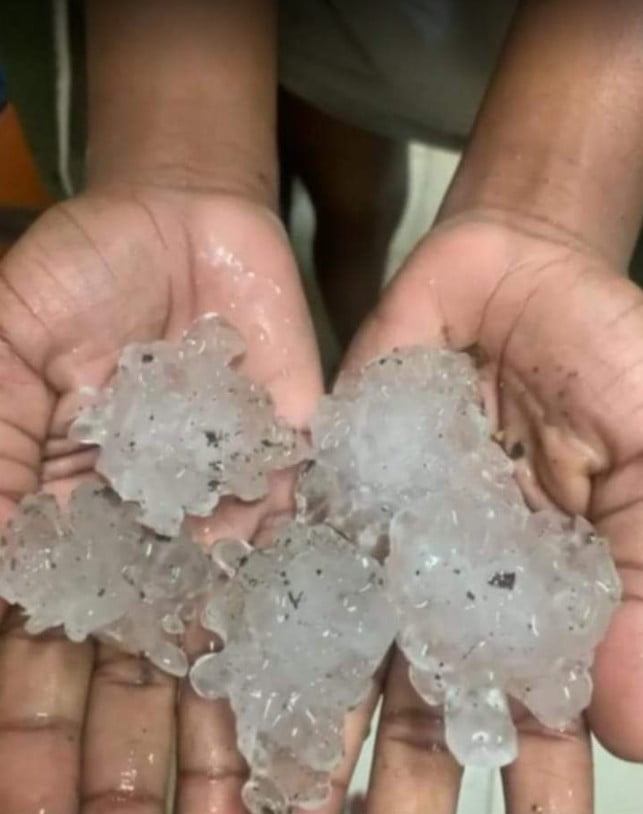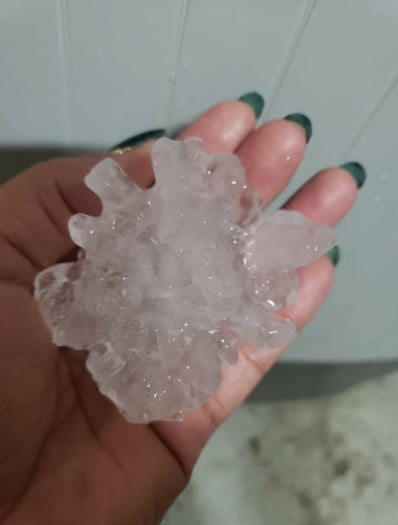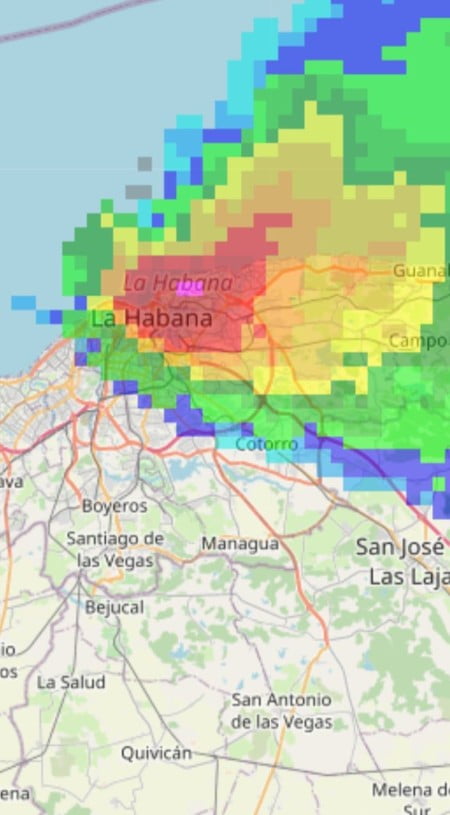Historic hailstorm hits Havana — one of the most important hailstorm events in known history, Cuba

A historic hailstorm hit Havana, Cuba on April 20, 2023, with hail the size never before seen in Cuba. This event will enter history books as one of the most important hailstorm events in known history.
On April 20, 2023, an unusually extreme weather event affected areas of Havana, the capital of Cuba. From approximately 05:15 (local time), the fall of large hail was reported in several municipalities of the city, which at the same time holds the category of the province.
When I received the first call from a colleague, at just 05:29 am, I was already awake from intense thunderstorm activity and concerned about rain falling on crumbling early 20th century buildings that for the past 64 years have not received any maintenance. At that time, I had not yet connected to Cuba’s limited mobile data internet and naively thought that it was some of those storms that usually come with the Northeast flow, through the Straits of Florida, formed near the Cuban north coast.
In my forecast of April 19, through my Facebook page “Meteorologist Alejandro Adonis”, I had commented on the generally unfavorable conditions for rain in western Cuba, due to the presence of a layer of very dry air between the levels of 850 and 600 hPa, in addition to the influence of the left sector, more stable, of the upper trough (with the axis over eastern Cuba at the level of 300 hPa).
Just the day before (April 18) there was a hailstorm, also historic, for the town of Mayarí, in the Holguín province, with an approximate size of up to one inch, never seen there even by older residents. But the synoptic environment was completely consistent with what happened in Mayarí and even though this type of severity is not forecast in Cuba in an operational way if I had to choose an area to forecast hail and severity in general, that would be eastern Cuba.
But the atmosphere had plans for Havana and while in general, everything was quite stable and dry over western Cuba, in the Straits of Florida the troposphere became highly unstable.
Looking at the soundings derived from the global models ECMWF (quite limited for the general public and independent researchers) and GFS, they suggested MUCAPE values of 721 J/kg and 1837 J/kg, respectively.
It is obvious that the GFS had a better view of the actual scenario than the ECMWF, but even so, at the spatial resolution available to the public in the working version of this model, we are probably generalizing too much. The NAM (3 km) and WRF-ARW2 mesoscale models, which I consulted hours after the event, showed MUCAPE values of 2209 and 3218 J/kg, respectively. The dry layer between 850-600 hPa that I had mentioned in my Facebook live, was clearly visible, but with such high instability and PWAT between 39.1 – 42.9 mm (1.54 and 1.69 inches), the ingredients were in place for deep convection to occur and once in action the mechanism, the updrafts, and downdrafts were sufficiently separated to maintain the storm’s permanent influx of feed, allowing it to travel more than 100 km (62 miles) from its formation site to dissipate southeast of Havana.
Hail fell in the municipalities of Plaza de la Revolución (at the eastern end of the municipality), Centro Habana, La Habana Vieja, Regla (including here the Casablanca weather station), Guanabacoa and San Miguel del Padrón.
Never before, according to available records, has a single storm, completely isolated from other areas of deep convection, produced hail in so many areas of Havana at the same time (and of Cuba in general).
Furthermore, while the first photo I received was already quite impressive for Cuba and especially for Havana, with 2.5 cm (1 inch) hailstones (thanks to Rodolfo Venegas for that report), within a few minutes, dozens of images began to arrive, of hailstones increasingly larger, with the volume of ping pong balls and some up to almost 2/3 the volume of a baseball.
There were strong winds and intense thunderstorm activity, but the main element of the severity of this storm was the hail never before seen in Cuba and less so in Havana.



All of the features mentioned, as well as other technical details that require much deeper analysis, strongly suggest that this storm was a full-fledged supercell.

This would be the second time that a storm of this type has affected Havana, after the one that produced the EF4 tornado in January 2019, although it is possible that in previous decades some of these storms went “unnoticed”, given the most backward technology and the most outdated meteorological concepts.
But those of 2019 and 2023 were unique, due to their effects and their characteristics, and they remind us that Cuba can sometimes experience severe weather conditions typical of mid-latitudes, which are not limited by the imaginary line of the Tropic of Cancer.
Written by M. Sc. Alejandro Adonis Herrera (Facebook: @MeteorologoAlejandroAdonis)
Featured image credit: M. Sc. Alejandro Adonis Herrera / user submitted


Commenting rules and guidelines
We value the thoughts and opinions of our readers and welcome healthy discussions on our website. In order to maintain a respectful and positive community, we ask that all commenters follow these rules.